New Driver, About To Start Training Tomorrow Morning!
Topic 8175 | Page 1

Sounds like you're getting a good start with a good company!
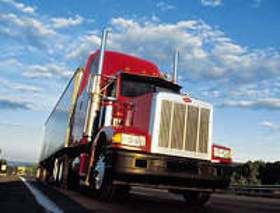
I am looking forward to this as well. I am using my GI Bill to pay for the school too. I'm interviewing potential employers, not the other way around, to find the right fit for my family and I. I have 3 special needs kids at the house so taking care of them is #1. I need a company to understand that which why I'm looking around. I don't want to just work for anyone. It's good to see there's another brother/sister-in-arms in this group. I just joined but I can tell that this group is a good one.

Sounds like you're getting a good start with a good company!
Yup, they've been nothing but kind, understanding, generous and professional so far!
I am looking forward to this as well. I am using my GI Bill to pay for the school too. I'm interviewing potential employers, not the other way around, to find the right fit for my family and I. I have 3 special needs kids at the house so taking care of them is #1. I need a company to understand that which why I'm looking around. I don't want to just work for anyone. It's good to see there's another brother/sister-in-arms in this group. I just joined but I can tell that this group is a good one.
I wish you the best of luck finding the right match for you. There were about 3 times in the last couple of weeks when I thought I was close, but somehow it ended up falling through. It was hard not to get disappointed during the search. But my family and I prayed hard and stayed patient, and in the end I think everything worked out for the best. I think I'm right where I need to be.
So here's my recap of the day:
Got to the JBT terminal at 8:00 AM. There's another young guy going through training right now too, he's been there for about 3.5 weeks so far, and he'll be taking his skills test pretty soon. For the first couple of hours, we talked about properly securing loads, and watched an eye-opening PowerPoint presentation showing a bunch of different truck accidents, most of them from poorly secured loads. Funny how it's most often driver error that ends up causing these wrecks. What I got from all this: be safe, smart and attentive, and you will minimize your chances of something like that ever happening.
After that, my trainer sent me out to a truck to do "throttle drills." He had talked a lot about proper throttle control while shifting, and wanted me to practice. Basically I had to try to keep consistent RPMs at different ranges (900, 1200 and 1600 primarily) while disengaging the clutch. This was all done while sitting still in neutral. I discovered that it's very hard to keep one foot steady while pushing with the other foot!
Next we took our DOT lunch break, and when we came back, the three of us hopped into the truck to go for a "test drive." This was mainly for our trainer to 1) see where I'm at, and 2) give the other guy some more practice. I drove west on I-90 for almost an hour and the other student drove back. He had me practice going from 10th to 9th repeatedly without using the clutch at all. This was really weird for me, since in CDL school all we did was double-clutch on every shift. We never even skipped gears. Now here I am doing clutch-less shifts and skipping every other gear to boot. I think not using the clutch is their way of having me practice throttle control, speed/RPM matching and gear selection, but it sure will be nice when I can get back to my double-clutching habits.
After we got back (around 4:00 PM), we dropped the training flatbed and hooked up to a newer one, making sure we had a full load of bungee cords, straps, tarps and dunnage. This was done because tomorrow morning at 6:00 AM we're going down to St. Maries, ID to pick up a load of lumber. That will be interesting. My first time picking up a load, my first time securing one, and my first time driving with a loaded trailer!
CDL:
Commercial Driver's License (CDL)
A CDL is required to drive any of the following vehicles:
- Any combination of vehicles with a gross combined weight rating (GCWR) of 26,001 or more pounds, providing the gross vehicle weight rating (GVWR) of the vehicle being towed is in excess of 10,000 pounds.
- Any single vehicle with a GVWR of 26,001 or more pounds, or any such vehicle towing another not in excess of 10,000 pounds.
- Any vehicle, regardless of size, designed to transport 16 or more persons, including the driver.
- Any vehicle required by federal regulations to be placarded while transporting hazardous materials.
Terminal:
A facility where trucking companies operate out of, or their "home base" if you will. A lot of major companies have multiple terminals around the country which usually consist of the main office building, a drop lot for trailers, and sometimes a repair shop and wash facilities.
SAP:
Substance Abuse Professional
The Substance Abuse Professional (SAP) is a person who evaluates employees who have violated a DOT drug and alcohol program regulation and makes recommendations concerning education, treatment, follow-up testing, and aftercare.
DOT:
Department Of Transportation
A department of the federal executive branch responsible for the national highways and for railroad and airline safety. It also manages Amtrak, the national railroad system, and the Coast Guard.
State and Federal DOT Officers are responsible for commercial vehicle enforcement. "The truck police" you could call them.
OWI:
Operating While Intoxicated
Part of the reason they're teaching to float the gears is (as many here will tell you) because after taking your driving test, you will rarely use the clutch except for starts and spoofs. Good luck, have fun, be safe and keep us up to date !!
Float The Gears:
An expression used to describe someone who is shifting gears without using the clutch at all. Drivers are taught to "Double Clutch" or press and release the clutch twice for each gear shift. If you're floating gears it means you're simply shifting without using the clutch at all.

UPDATE:
Last Friday we drove to St. Marie's, ID to pick up a load of plywood and bring it back to the terminal. The load was to be picked up by another driver there and taken to Pennsylvania. This was meant to be a training exercise for me and another student.
So we met our trainer at the terminal at 6:00AM, did a pre-trip and hit the road. I drove for the first hour or so on 90W, practicing some shifts from 10th to 9th and back again. Then we swapped drivers and the other student drove the rest of the way on 90. The trainer took over on the way down to St. Marie's because of the tight curves and narrow roads. We got to the lumber yard around 9:30AM (8:30 local time), got our paperwork from the office, and pulled around to load up in the warehouse.
This was actually the first time I had ever seen a loading process. We hung a bungee strap on the rail to indicate the center point of the trailer for the forklift operator. He was pretty much a machine, zooming back and forth with the bunks of wood and precisely placing them without any hesitation. It was truly an awe-inspiring sight to see such skill and professionalism! He loaded 17 bunks in a 4-3-3-3-4 pattern, starting at the center and working his way out, and as he loaded them, we proceeded to strap them down. When he was done and we had finished strapping, we hopped in the truck and drove out of the warehouse to a tarping area.
We spent the next hour or so tarping the entire load (see pictures below). First we threw a clear plastic sheet over the whole thing. Then we laid down the rear tarp, anchored the corners, and secured all the edges. Next we did the same thing with the front tarp. All-in-all it was a pretty eye-opening experience as far as seeing what life will be like as a solo flatbed driver. It was hard enough with two of us doing it (plus a trainer directing us), so I can only imagine how difficult it will be by myself, especially next winter when conditions are "less than ideal." But hopefully by then I'll have had enough practice to be able to do it quickly in snow and icy wind.
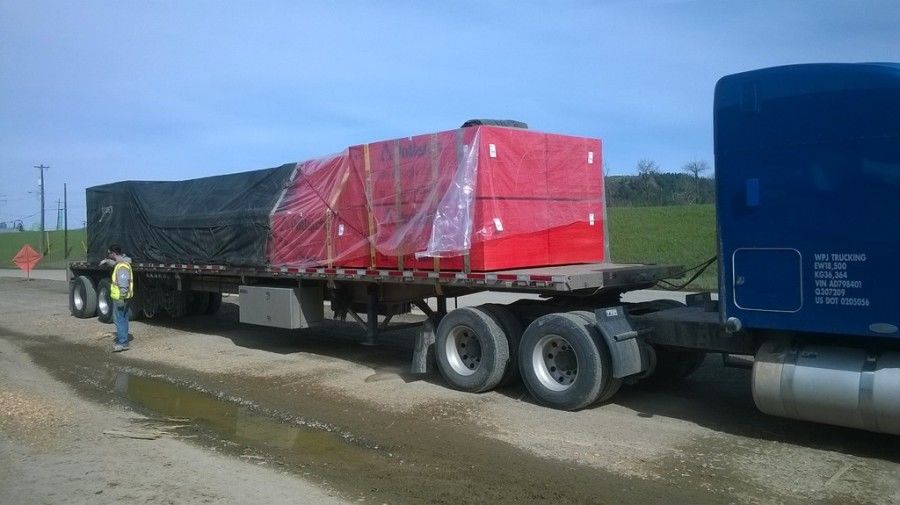
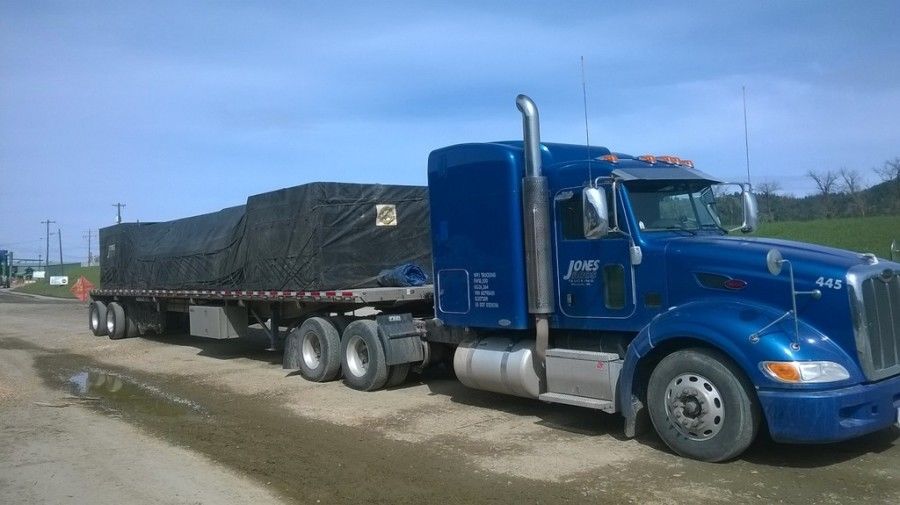
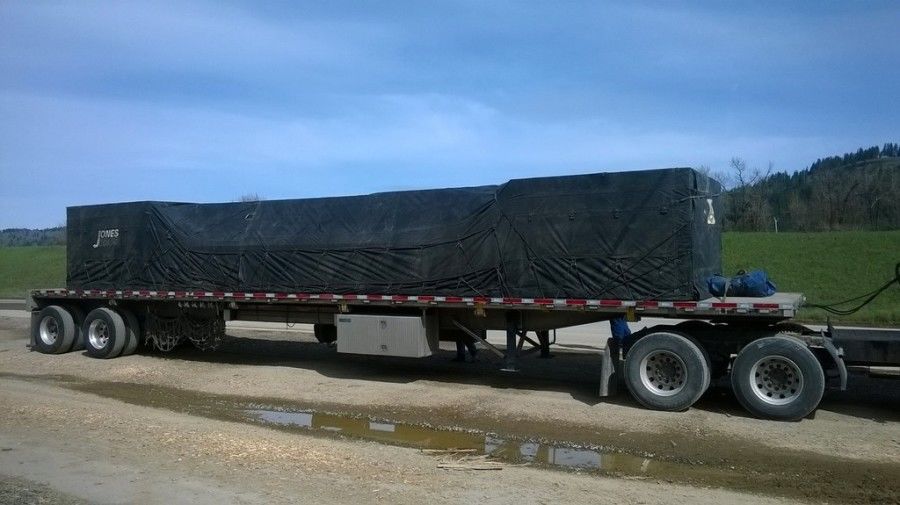
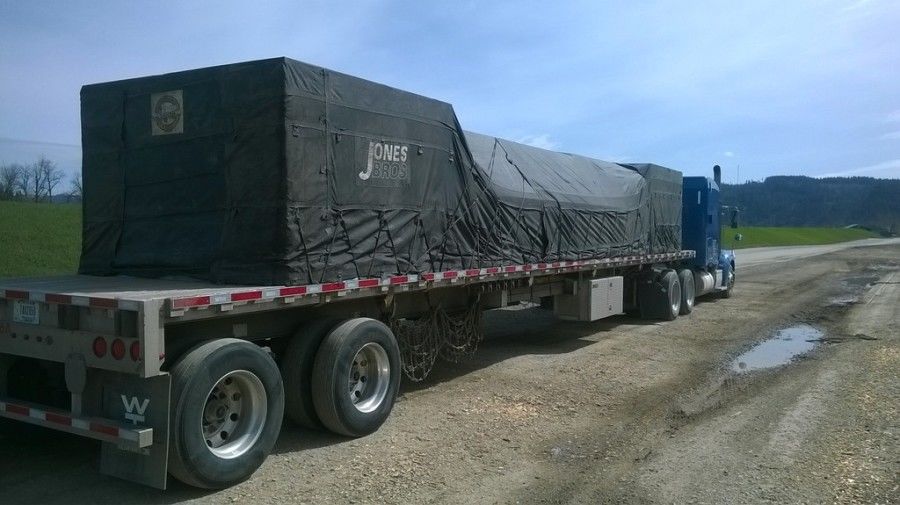
Once the load was neatly covered, we started back. We did a load check and took our DOT break in St. Marie's, and our trainer drove us back up to 90 along the tight highway. From there, the other student drove us to St. Regis where we stopped to grab a bite to eat, and then I drove us home. We finally arrived at the terminal around 5:30PM and unhooked the trailer in preparation for the other driver to take it out the next day.
This was a great experience for me. I got to see what it's like to arrive at a shipper , where to go once you get there, what the entire loading process is like, how to properly tarp a load, and it also was my first time driving a fully loaded trailer. I'm so thankful for learning experiences like this!
After spending the weekend at home and driving back out Sunday night, I spent yesterday and today mainly in the classroom. I finally met the lead trainer on Monday (he had been off all last week). He's a seasoned veteran with about 40 years of experience, very dedicated to the "craft" of truck driving and totally committed to perfection. He definitely sets the bar pretty high, but I'm happy he does it, because it's really inspiring and motivating. He makes me feel like I want to be the best, most professional driver I can possibly be, and I hope with his help I can start my career off on the right track.
So in these last two days, we've mainly focused on load distribution (how to calculate load centers and optimize load placement for weight balance, axle limits, etc.), various tarping strategies and techniques, correct usage of logbooks (how to maximize your hours of service, trip planning, calculating ETAs and figuring out available driving time after dropping off a load, etc.) and proper shifting techniques.
This afternoon I went out for a road test with the head trainer. We went to a low-traffic, industrial area of town and just drove around slowly, practicing shifting. Seeing how smoothly he drove the truck, and how gently he was able to play with the throttle, the gears and the clutch was truly amazing. It was like watching a master pianist tickle the keys on the piano, he was that good. It felt like he was driving a luxury car with an automatic transmission. So after he showed me how it was supposed to be done, I took over to show him how an amateur does it. After a few minutes of jerky shifts and grinding gears, the whole idea of "floating the gears" finally started to click for me and it became a lot smoother. Thankfully, my instructor told me that he was happy with where I was at and with the improvement I had showed so quickly. That really helped boost my confidence!
Tomorrow I guess I'll be driving a truck out to Butte with one of the trainers to do TSA fingerprinting for my TWIC (paid for by the company—sweet!). I'm really looking forward to that! I'll keep posting updates until no one is interested anymore :)
Logbook:
A written or electronic record of a driver's duty status which must be maintained at all times. The driver records the amount of time spent driving, on-duty not driving, in the sleeper berth, or off duty. The enforcement of the Hours Of Service Rules (HOS) are based upon the entries put in a driver's logbook.
Shipper:
The customer who is shipping the freight. This is where the driver will pick up a load and then deliver it to the receiver or consignee.
Terminal:
A facility where trucking companies operate out of, or their "home base" if you will. A lot of major companies have multiple terminals around the country which usually consist of the main office building, a drop lot for trailers, and sometimes a repair shop and wash facilities.
DOT:
Department Of Transportation
A department of the federal executive branch responsible for the national highways and for railroad and airline safety. It also manages Amtrak, the national railroad system, and the Coast Guard.
State and Federal DOT Officers are responsible for commercial vehicle enforcement. "The truck police" you could call them.
TWIC:
Transportation Worker Identification Credential
Truck drivers who regularly pick up from or deliver to the shipping ports will often be required to carry a TWIC card.
Your TWIC is a tamper-resistant biometric card which acts as both your identification in secure areas, as well as an indicator of you having passed the necessary security clearance. TWIC cards are valid for five years. The issuance of TWIC cards is overseen by the Transportation Security Administration and the Department of Homeland Security.
OOS:
When a violation by either a driver or company is confirmed, an out-of-service order removes either the driver or the vehicle from the roadway until the violation is corrected.
Please do keep the updates coming... love the pictures (I think they really do save you from having to type thousands of words trying to describe something) 
Congratulations!!!! Nice looking tarp job too, tight and neat.

Not much to update at this time. Basically I've spent the last two days practicing my shifting & turning, and doing little test runs in industrial parks around the area. I applied for my passport yesterday (again, totally paid for by the company, they even paid to expedite it). Since I live in Idaho but was applying in Montana, I had to have a second form of picture ID. At first I thought I would have to wait and apply when I got back home, but luckily they accepted my Costco card as the second ID!
My shifting is getting a little smoother, but the trainer really pushes for perfection. He said he was challenged early on in his career to hang a bolt above the dash on a piece of string; once he could shift and turn without moving that bolt, then he would be considered a "real" driver. Well, he took that to heart. He said he had that thing hanging up there for over a year until he finally had it staying just about motionless. That's how dedicated he is to his profession. And now he wants and expects that same thing from us. Not perfectly of course, but he really, REALLY pushes you to nail it down and make everything as smooth as possible, even under stressful situations. Any slight mistake and he immediately jumps on it and it can be a little unnerving. Not that it's a bad thing, I mean I want to be the best driver I can possibly be and learn as much as I can from him. And I know I will be having to do this stuff under even more stressful conditions once I'm out there on my own. Plus he is still very encouraging, he's not a jerk about it or anything. It's just hard!
We also had one of the guys from the office come in today and talk to us about Canadian ops: what kind of documentation is needed when crossing the border each way (i.e. PARS and PAPS stickers), different regulations when inside Canada, when and where and how to adjust your trailer when crossing the border, the high price of everything up there, etc.
I guess tomorrow will just be more of the same. Maybe some more classroom work coupled with more practice. The other guy I've been training with passed his CDL test yesterday and will be getting into his truck probably around the middle of next week. He's been training for almost 4 weeks now. They're thinking I will probably get my truck that next weekend or sometime the week after that. I'm super excited to know which truck I'll be getting. They have a few brand new Kenworths sitting on the lot right now, but I have a feeling they're gonna put a more experienced driver into one of those and give me his old one. But they also have a fresh batch of Petes coming in in about a month, and I may be able to get into one of those. The only drawback: they're automatics :(
So far I have to say, I am very impressed with this company. The training is stellar, their reputation is stellar, their pay and benefits are stellar (e.g. 100% of driver's health insurance premiums paid, plus 40% of family's, plus they provide a health reimbursement account which pays most of your deductibles!) their staff and dispatchers are stellar (every dispatcher is required to drive for a year before moving into dispatch, so they know what you go through). Did I mention how stellar everything is? :)
CDL:
Commercial Driver's License (CDL)
A CDL is required to drive any of the following vehicles:
- Any combination of vehicles with a gross combined weight rating (GCWR) of 26,001 or more pounds, providing the gross vehicle weight rating (GVWR) of the vehicle being towed is in excess of 10,000 pounds.
- Any single vehicle with a GVWR of 26,001 or more pounds, or any such vehicle towing another not in excess of 10,000 pounds.
- Any vehicle, regardless of size, designed to transport 16 or more persons, including the driver.
- Any vehicle required by federal regulations to be placarded while transporting hazardous materials.
Dispatcher:
Dispatcher, Fleet Manager, Driver Manager
The primary person a driver communicates with at his/her company. A dispatcher can play many roles, depending on the company's structure. Dispatchers may assign freight, file requests for home time, relay messages between the driver and management, inform customer service of any delays, change appointment times, and report information to the load planners.HOS:
Hours Of Service
HOS refers to the logbook hours of service regulations.EPU:
Electric Auxiliary Power Units
Electric APUs have started gaining acceptance. These electric APUs use battery packs instead of the diesel engine on traditional APUs as a source of power. The APU's battery pack is charged when the truck is in motion. When the truck is idle, the stored energy in the battery pack is then used to power an air conditioner, heater, and other devices

AND, what absolutely KILLS me is that the Department of Labor labels this occupation unskilled. Just.Kills.Me. I have a ton of respect for the skilled driver you will soon be. Best of luck to you. Signed, another vet.
New Reply:
New! Check out our help videos for a better understanding of our forum features

















Preview:








 TT On Facebook
TT On Facebook
Hello everyone,
I have been using this site for about a month now to gain valuable information on the trucking industry, and I finally figured I'd become a member and share my own experiences. So it all started at the beginning of March when I used my GI Bill benefits to enroll in a CDL training program run through my local community college's workforce training center. About a week and a half ago, I graduated and passed the skills test to get my class A with no restrictions and the Tanker & Doubles/Triples endorsements (still waiting on my TSA background check to come in so I can add the Hazmat).
After applying at a bunch of companies and doing a lot of research, I got offered a job with Jones Brothers, an OTR flatbed company in Missoula, MT. They seem like a great company who really looks after their drivers and pays them well, and not only that, they were one of the only companies willing to take me on as a new CDL grad... so that was a plus. I start a training period tomorrow morning which will last about 2 weeks give or take, depending on how I do. They'll go over a lot of the basics that I already learned in CDL school, plus the little extras like how to tarp, deliver loads, trip planning, etc. And they're even putting me up in a hotel while I'm out here.
All in all, I have to say I am super excited about beginning this new career. I'm in my mid-30s and have bounced around to a lot of different jobs over the years, but I really think this could be the long-term career I've been looking for. I loved every minute of CDL school, and I have a feeling I'm going to love every minute of being on the road.
Anyway, I just wanted to introduce myself. I'm really looking forward to exploring the forums and sharing my own experiences, both in training and once I get on the road. Happy trucking everyone!
CDL:
Commercial Driver's License (CDL)
A CDL is required to drive any of the following vehicles:
HAZMAT:
Hazardous Materials
Explosive, flammable, poisonous or otherwise potentially dangerous cargo. Large amounts of especially hazardous cargo are required to be placarded under HAZMAT regulations
OTR:
Over The Road
OTR driving normally means you'll be hauling freight to various customers throughout your company's hauling region. It often entails being gone from home for two to three weeks at a time.
Doubles:
Refers to pulling two trailers at the same time, otherwise known as "pups" or "pup trailers" because they're only about 28 feet long. However there are some states that allow doubles that are each 48 feet in length.